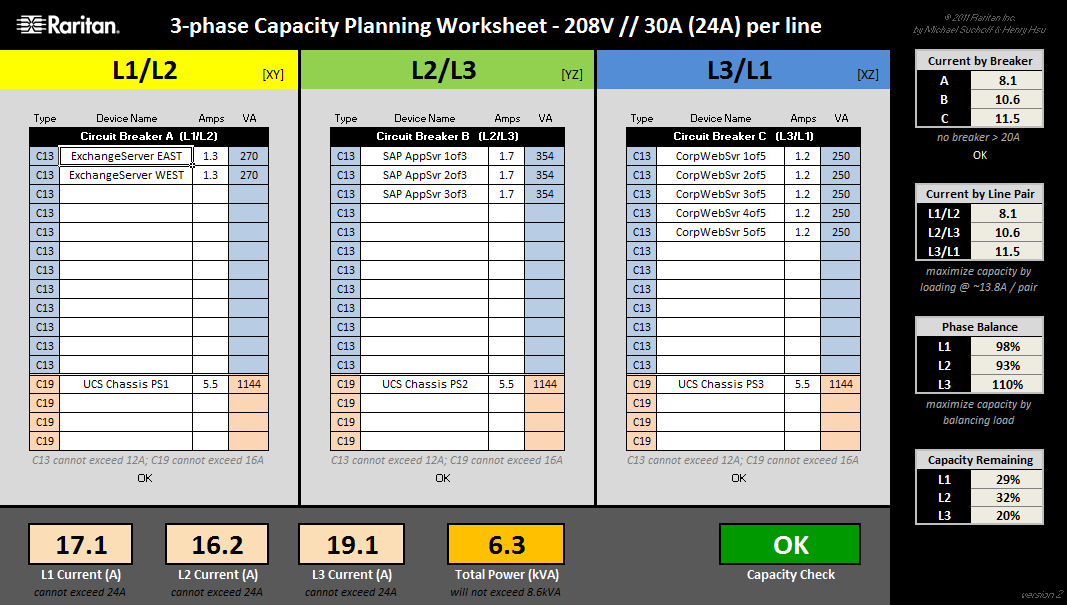The Raritan Blog
Home » Raritan Blog
DCIM – How Do I Decide What’s Right For Me and Cut Through All the Hype and Confusion?
July 15, 2011
As SVP of Global Sales and Marketing for Raritan, I have had the opportunity to speak with many different companies around the world that have been considering a DCIM solution. In most cases, the conversation quickly turns to “with over XX companies and growing claiming to have some sort of a DCIM solution out there today, how do I chose the right one?” I can see the frustration on their faces as they try to decide which solution is right for their specific needs. At this point I tell them to take a deep breath and then I try to help them simplify the problem down to some basic needs.
First, let’s identify your top one to two most pressing needs. What problem or problems are you trying to solve? Are they in the areas of asset management, capacity planning, energy management, visualization, change management or environment management? Sure many of the companies that offer solutions in the DCIM space claim to offer all of these features, but do they really solve the problem that you are facing? Chances are not. Don’t try and boil the ocean. Solve for the few biggest problems first.
Raritan at Cisco Live!
July 1, 2011
Raritan Booth #849
July 11-14, 2011
Mandalay Bay Resort and Convention Center
Las Vegas, Nevada
How to Calculate Current on a 3-phase, 208V Rack PDU (Power Strip)
Henry Hsu
March 14, 2011

Problem Statement
In recent years, extending 3-phase power distribution all the way to server cabinets and racks has become extremely popular in new data center builds—for many good reasons. Principally, for cabinet power capacities above 5kVA, utilizing 3-phase rack power strips can significantly reduce the copper required to supply such dense loads.
But unfortunately, many users (rightly) find it cumbersome to provision and calculate current (amperage) for 3-phase power in the rack—for example, a typical question would be:
Dominion KSX II Firmware Update - Release 2.3
Richard Dominach
February 21, 2011
The Dominion KSX II combo KVM/IP and secure console server has been upgraded to include all KX II Release 2.3 features, except tiering/cascading. This includes FIPS 140-2 encryption, Smart Card/CAC and other security features, making it ideal for government, military and other security conscious customers.
The KSX II supports 4 or 8 “true serial” connections for remote/branch office deployments, as well as racks requiring both KVM and serial connections. A “true serial” connection gives secure console access over IP without the use of an expensive dongle. In addition, third party SSH clients can be used in addition to Raritan’s Serial Client with features such as logging, cut and paste, and secure chat.
If you have branch offices or racks with serially and KVM controlled devices then the Dominion KSX II can give you anytime/anywhere KVM and serial remote access.
Bandwidth Usage for KX II HD 1080p Resolution?
Richard Dominach
January 7, 2011
A customer recently asked how much bandwidth the Dominion KX II KVM-over-IP access uses, specifically for the full HD (1920x1080) resolution. This is a common user question. The answer is as follows.
There is no fixed bandwidth for the KX II products. The bandwidth depends on how much change there is on the video screen at a particular instant. So if there is no change on the screen, then there will be no or very small amount of bandwidth. If the user is playing a movie, then there could be a very large bandwidth. Of course with larger video resolutions, then there will be more bandwidth than with a smaller resolution.
There is a feature in the KVM clients to see the amount of bandwidth being used. This can be used to check the bandwidth. There are several settings to decrease bandwidth, as well as some helpful tips on managing bandwidth in the KX II User’s Guide called ‘Bandwidth and KVM-over-IP Performance’ that the customer may find useful.
Subscribe
Upcoming Events
Latest Raritan News
- Legrand Wins Back-to-Back Awards for Intelligent Rack Power Distribution Innovation
- Posted on June 25, 2024
- Legrand Certifications and Process Controls Provide Confidence in Information Security for Network-Connected Devices in Data-Related Applications
- Posted on March 5, 2024
- Legrand Releases Version 4.0 of Raritan’s Industry-Leading Secure KVM Switches, Raising Bar for Secure Desktop Access
- Posted on July 31, 2023
- Legrand Revitalizes Data Center Sector with Two Revolutionary Intelligent Rack PDUs
- Posted on May 1, 2023
- Raritan Reveals The MasterConsole® Digital Dual KVM Switch
- Posted on February 18, 2021